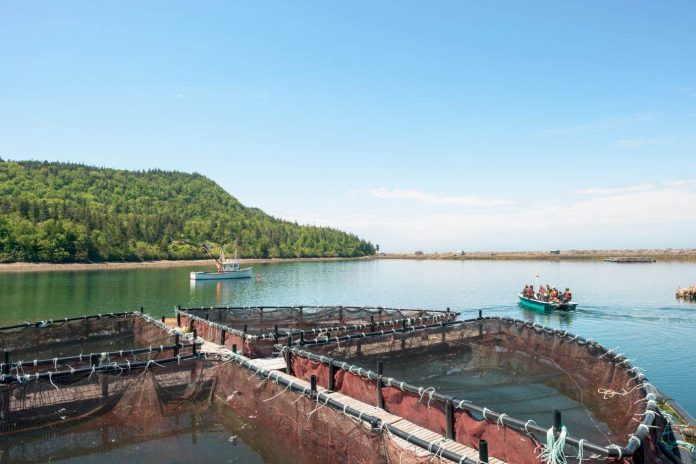Canadian producer Cooke Aquaculture, university researchers and a number of industry participants, have been taking part in an offshore project aimed at restoring wild Atlantic salmon to New Brunswick rivers, it has been learned.
The project has obvious potential benefits for farmed salmon, as it is hoped the essential differences between the wild and farmed become better understood and, if possible, narrowed.
The Fundy Salmon Recovery project has seen the embattled Cooke Aquaculture — which has met some local resistance in its bid to expand in Maritime Canada — care for wild fish on its farm at Dark Harbour on Grand Manan Island in the Bay of Fundy. Sources describe the facility as the first ever marine recovery farm for wild Atlantic salmon in the world.
“This is an entirely new approach to restoring Canada’s iconic wild Atlantic salmon,” a spokesperson for the industry who’s close to the project tells Salmon Business. “It’s seeing promising results.”
In mid-October, project partners released 800 wild salmon back into their native rivers. The day is being heralded as “historic in terms of the numbers of mature Atlantic salmon being returned to these rivers, and the people who work in the salmon farming industry are proud to be part of it.”
University of New Brunswick researcher, Tommi Linnansaari, has headed a similar project called SAS, or smolt-to-adult supplementation, where nearly extinct salmon are raised in grow-out pens before being returned to a in New Brunswick. In contrast, the Cooke project returns salmon to the Upper Salmon River, where they’ve ceased to exist.
Linnansaari has high praise for the Cooke-hosted Fundy project. “Fundy Salmon Recovery is a very successful program. (His own University) project is a science project that is trying to answer the knowledge gaps related to the SAS conservation strategy, which is the strategy employed in the Fundy salmon recovery program, and many other rivers, with success.” He adds that his project aims to analyze how well the SAS fish compare against the ‘gold standard’ of wild fish.
The salmon industry worldwide cites research on increased salmon survivability when smolt are left longer “in their natural environment”. Many of the salmon in the Fundy project are spawned in the wild and then taken to the conservation farm: “The salmon grow in a protected version of their natural marine environment,” the industry source says.
Dwindled resource
Salmon in the Bay of Fundy once numbered 40,000, but numbers have dwindled to just 250. Ottawa and the province of New Brunswick funded the project at a critical time in the wild-versus-farmed salmon debate in Canada, which has pitted environmentalists against the industry. It is hoped the Fundy project bridges the gap between the two groups.
Cooke is allied in the project with equipment partner J.D. Irving and top scientists from UNB and around the world. Some see an opportunity to revive a wild Atlantic salmon industry that was worth USD116 million in 2010, two thirds of which was recreational fishing.
The Fundy recovery project “is showing very promising results any way you look at it,” Linnansaari says, adding that the next step is to stay the course and bring wild salmon back.
Together with Cooke staff, his colleagues are already monitoring the recovery of salmon in Upper Salmon River.

